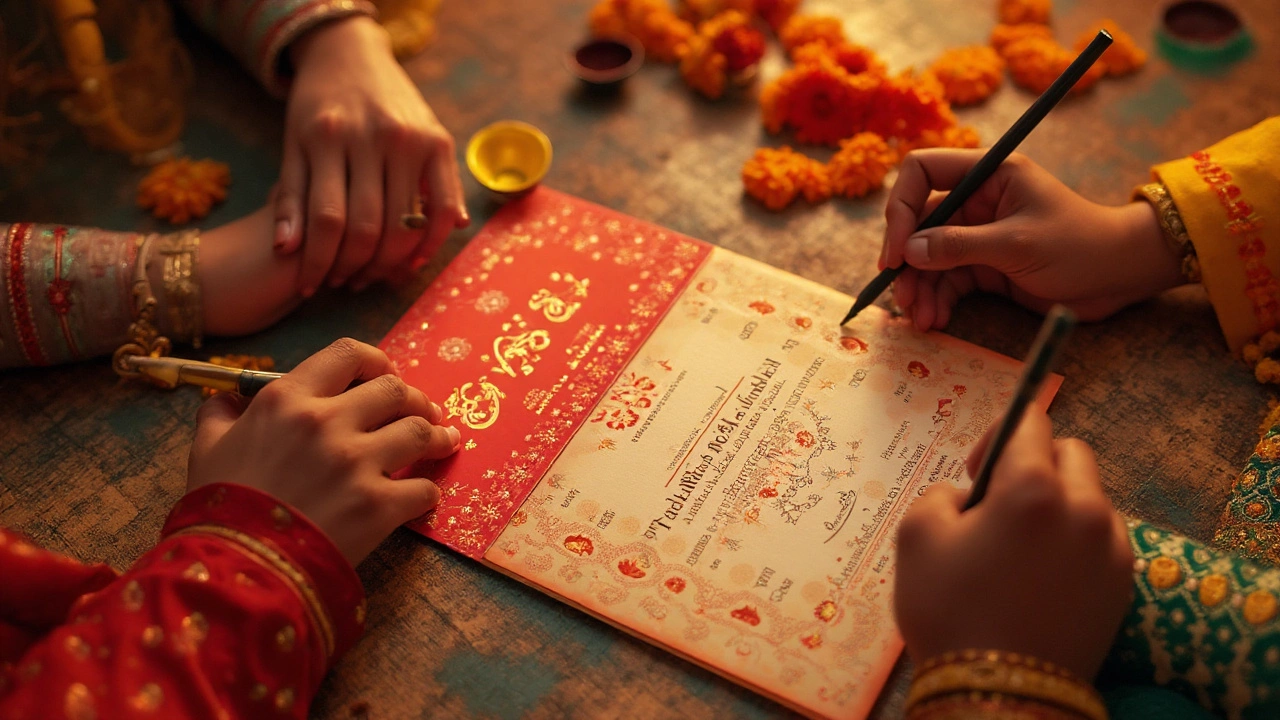Wedding Invitation Essentials: Timing, RSVP, and Design Tips
When working with wedding invitation, the printed or digital card that tells guests when and where your ceremony will happen. Also known as wedding stationery, it sets the tone for the whole celebration and anchors your entire wedding timeline, the schedule of planning milestones from save‑the‑date to the big day. A well‑timed invitation not only respects wedding etiquette, the set of traditional rules guiding how and when you communicate with guests but also gives you a reliable head‑count for budgeting and venue planning.
Key Elements to Nail Your Invitation Process
First, figure out the right month to mail. Most experts agree that sending the invitation 8‑10 weeks before the ceremony gives guests enough time to book travel, while a save‑the‑date 6‑12 months ahead locks in the date for out‑of‑town friends. If your wedding falls in a busy season—like summer in the UK—push the send‑off toward the 10‑week mark to avoid postage delays. Second, keep the wording clear and friendly. Include the core details (who, what, when, where), a brief dress code note, and a clear call‑to‑action for guests to RSVP, the response request that lets you know who’s coming. A deadline 2‑3 weeks before the big day balances enough planning time with the reality that people often need a little extra buffer to decide.
Third, think about design early. Your color palette, typography, and any illustration should echo the overall wedding theme—whether you’re going for a minimalist marble vibe or a bold tropical vibe. Many couples now blend a traditional paper invite with a digital add‑on for updates, which satisfies tech‑savvy guests and reduces printing waste. Fourth, consider the budget impact. According to recent UK data, the average spend on invitations ranges from £300 to £1,200, depending on paper quality, embossing, and envelope liners. DIY designs can shave off 30‑40% of that cost, but factor in extra time for printing and proofing. Finally, don’t forget the extra cards—plus‑ones, kids, and special diet notes—so you avoid last‑minute scrambling.
Every decision you make about the invitation links back to your overall planning flow. For example, confirming the RSVP deadline early lets you lock in the final guest list, which directly influences catering portions, seating charts, and even the size of the wedding cake. In turn, a clear guest count helps you stay within the average wedding flower budget or decide if a DIY décor route makes sense. When you treat the invitation as the first official communication piece, you set the stage for a smooth, well‑coordinated event.
Below you’ll find a hand‑picked collection of articles that dive deeper into each of these topics—budget‑friendly flower hacks, photographer editing expectations, suit color tips for a slimmer look, and more. Use them as a toolbox to fine‑tune your invitation strategy, keep your timeline on track, and avoid common pitfalls. Let’s get into the details and make your wedding invitation process as stress‑free as possible.
Wondering whose name should appear first on your wedding invitation? Get the lowdown on tradition, modern twists, same-sex couples, and cross-cultural customs, including practical tips and real examples.
